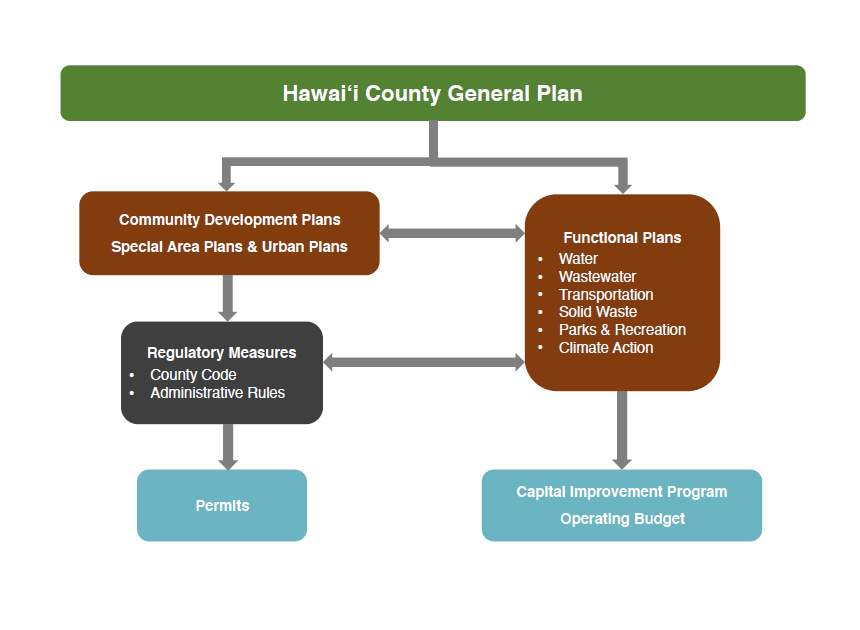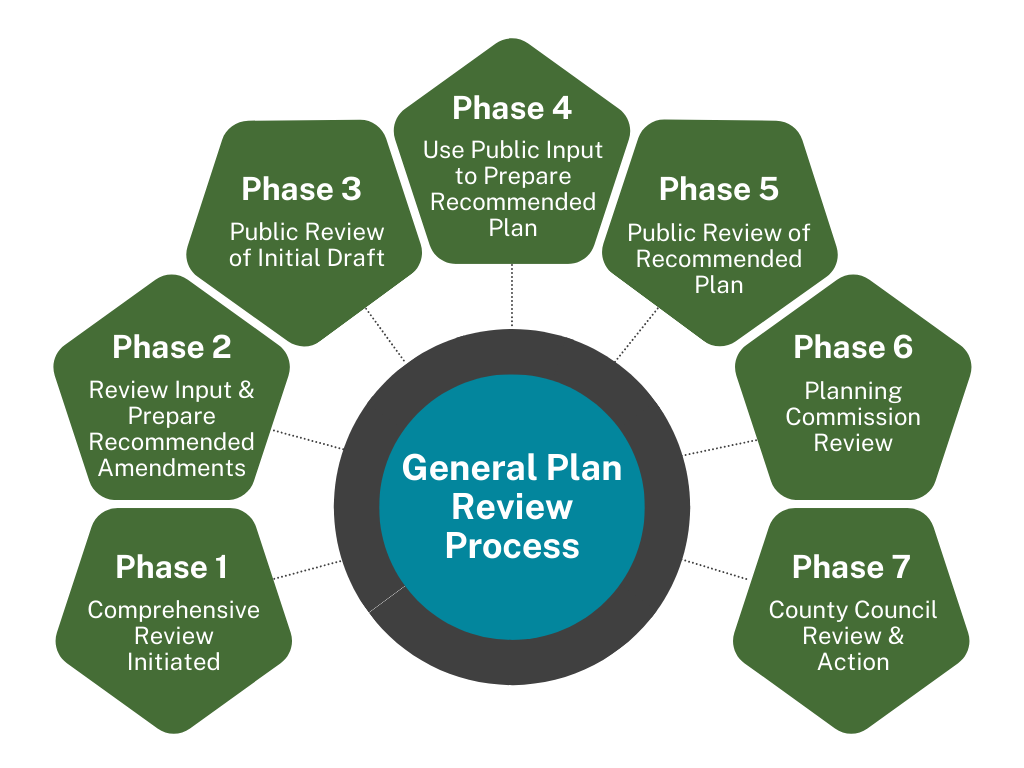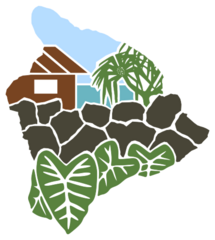What is the General Plan?
The County of Hawai‘i’s General Plan is the blueprint that guides the long-term development of Hawai‘i Island. It considers the needs of the entire island, and provides a sound growth strategy that directs future opportunities related to land use, zoning amendments and capital expenditures. The General Plan strives to position Hawai‘i Island for economic progress while preserving the environment and strengthening community foundations.
Collaborative Biocultural Stewardship & Climate Change
Collaborative Biocultural Stewardship Goal: Natural and cultural resources are thriving and sustainably managed, preserved, and restored to maintain our unique and diverse environment.
Collaborative Biocultural Stewardship Objectives:
- Increase the biodiversity and resilience of native habitats.
- Preserve and enhance the health and function of watersheds to promote water recharge, improve water quality, and reduce runoff.
- Increase direct community restoration and collaborative efforts to conserve and nourish the island's biocultural resources.
- The historical integrity, character, scenic assets, and open spaces of our communities are protected, restored, and treated as unique assets with significant social and economic value and managed in perpetuity.
- Protect, restore, and enhance our communities' unique scenic character.
Climate Change Goal: Ensure a just transition to a climate resilient island by addressing the causes and impacts of climate change through incorporating equitable climate mitigation and adaptation priorities into policies, programs, infrastructure, and decision-making.
Climate Change Objectives:
- Ensure that climate actions are equitable and uplift marginalized and disadvantaged communities.
- Reduce the County's carbon footprint to net zero emissions by 2045.
- Achieve a 100 percent renewable-powered County fleet by 2035.
- Support the statewide effort to achieve 100 percent renewable ground transportation and 100 percent renewable energy by 2045.
- Improve the identification of climate change threats, assessment of potential consequences, and evaluation of adaptation options.
Infrastructure
Transportation Access & Mobility Goal: Each community is connected by a multimodal and modernized transportation network that provides a system for safe, efficient, and comfortable movement of people and goods.
Transportation Access & Mobility Objectives:
- Achieve a transportation system that is consistent with and will accomodate planned growth.
- Increase transportation connectivity.
- Increase mass transit ridership by 50 percent by 2045.
- Reduce vehicle miles traveled (VMT).
- Achieve a tranportation system that employs all modes of transportation at a community scale.
- Incorporate green infrastructure to reduce stormwater runoff.
- Increase transportation safety for transportation's most vulnerable users and reduce traffic fatalities.
- Adequately maintain public transportation systems.
- Improve accessibility to airports, harbor systems, and support facilties.
Public Utilties Goal: Our communities are adequately served by sustainable and efficient public infrastructure, utilities, and services based on existing and future growth needs, sound design principles, and effective maintenace practices.
Public Utilities Objectives:
- Improve the efficiency, reliability, and sustainability of essential infrastructure systems.
- Increase the protection of existing and potential sources of drinking water.
- Planned and developed municipal sewer capacity is expanded to serve our Urban Growth Areas and reduce sewage-related impacts on water quality.
- Increase green infrastructure practices.
- Strive towards energy self-sufficiency.
- Advance policies, programs, and initiatives for public and/or private investment in broadband and telecommunications infrastructure.
Land Use
Land Use Goal: We strategically apply progressive land use strategies incorporating indigenous and contemporary knowledge and place-based practices to direct and manage growth for the health and safety of our communities.
Land Use Objectives:
- Maintain community character and land use compatibility.
- Increase the integration of natural systems planning.
- Increase equitable planning and decision-making processes.
- Reduce the threat to life and property from natural hazards and disasters.
- Increase the use of Smart Growth principles to focus development within designated urban centers.
- Maximize the use of Rural designated lands to preserve rural character and lifestyle.
- Support the active use of Productive Agricultural lands.
Health & Safety
Public Facilities & Services Goals: (1) Our communities are safe and protected, and have access to integrative health, education, and social services to support a high quality of life for all residents. (2) Our communities are adequately served by sustainable and efficient public infrastructure, utilities, and services based on existing and future growth needs, sound design principles, and effective maintenance practices.
Public Facilities & Services Objectives:
- Adequately maintain public facilties.
- Protect the health and well-being of residents and visitors.
- Achieve Zero Waste in Hawaiʻi County by 2045.
- Each community has access to a wide range of educational opportunities.
- Park facilities are located within a 10-minute walk in urban areas and a 10-minute drive in rural communities.
- Each community has access to healthcare facilities, programs, or community-based care.
Housing
Housing Goal: Residents have access to adequate and affordable housing to meet the needs of the population and provide equitable opportunities for household flexibility and mobility.
Housing Objectives:
- Increase the number and variety of newly constructed housing units for rent and sale that addresses a range of Area Median Income (AMI).
- Monitor, conserve, and improve the existing housing stock.
- Prioritize providing quality affordable housing for Hawaiʻi's residents.
Integrated Systems
Integrated Systems Goal: We employ integrated systems that are efficient, equitable, and organized to facilitate coordination and collaboration.
Integrated Systems Objectives:
- Increase collaboration and cooperation for efficiency, effectiveness, and responsiveness.
- Maintain fiscal integrity, responsibility, and efficiency.
- Achieve equitable outcomes for County programs, policies, and allocation of resources.
Economy
Economic Goals: (1) Our economy is diverse, regenerative, and innovative, improving and maintaining the financial well-being of our residents with a focus on increasing local economic opportunities. (2) Agriculture is a robust, diversified sector that addresses food security and includes a broad range of agricultural-based businesses that highlight value. (3) A high quality of life for residents is maintained when a regenerative visitor industry balances the preservation of natural and cultural resources with responsible visitation.
Economic Objectives:
- Improve access at all levels for education and training.
- Increase the growth and health of small businesses.
- Incorporate resiliency, diversity, and innovation in County programs, plans, and research to support healthy economic development and revitalization.
- Increase access to land for active food production.
- Increase interagency coordination, programs, and policy initiatives that improve local agriculture infrastructure.
- Support the visitor industry investment in its connection with communities, the ʻāina, and our historic and multicultural heritage.
- Increase authentic Hawaiʻi Island visitor experiences.


